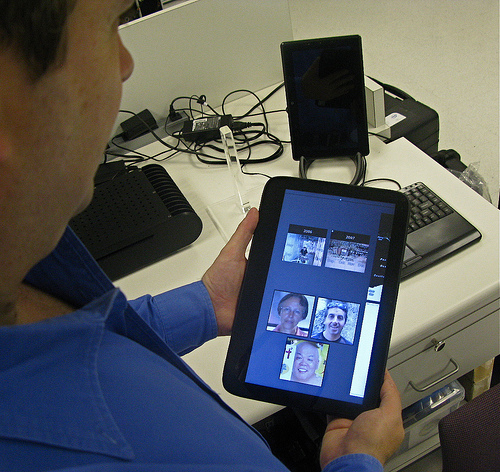User perspective: The art of touch interface design


I am not an app developer but have used hundreds of apps on tablets of all sizes and platforms. I have come to realize what makes a particular app interface work well and what makes one frustrating. Tablets are such personal devices given they are operated in the hand that an annoying app is not tolerated for long. They end up getting replaced with one that gives a more satisfying user experience.
Dual orientations
Almost every tablet on the market has the ability to automatically rotate the screen with the orientation of the physical device. Tablet apps need to make sure they account for this rotation by displaying more information in the long direction (width for landscape, height for portrait).
This is particularly important for apps that display more than one column from left to right. I have used apps that display two or more columns in the widest orientation (landscape) but change to a single column when the tablet is rotated to the narrower portrait orientation. I find it unsatisfying to use those apps as they display far less information in portrait, often stretching the one column until it looks ugly.
Apps that rotate gracefully and leave the multiple columns on the screen are more enjoyable to use. It is better to let users pan the columns into view than removing them altogether.
Make sure that any app interface controls make the rotated transition well. If you need to move controls around to make them fit, that is OK as long as it is really necessary. Don't just move controls around because you think it looks better; only move them if it is important. Users get very frustrated when controls suddenly disappear or move into random positions.
One observation that is obvious to me but seems to escape some developers, particularly those building apps for the BlackBerry PlayBook -- make sure your app screen rotates with the device. There is nothing more frustrating from the user's perspective than forcing the use of the tablet in a particular orientation. Far too many apps for the PlayBook can only be used in the landscape position, and those apps don't last long on my tablet. Let the user work with the tablet as she/he wants, not in the way that is easiest or makes the most sense to you. Tablets are all about freedom of choice when it comes to how (or where) they are used. Respect that, please.
Optimize for touch
This sounds logical, but I have used apps that are so difficult to operate it seems the touch controls were just an afterthought. Every window, column or pane that scrolls must do so smoothly and without the action triggering unwanted events. You swipe up/down or left/right and the entire pane moves as expected. Do not trigger an unexpected event as a result of any user touch on the screen. That is very frustrating and interrupts the natural flow of the app. The app with a good touch interface must be totally intuitive, not accompanied by reams of instructions. The user should know exactly what to expect when she touches the display in a certain way or place.
Make sure that triggers (buttons, arrows, etc.) are big enough to be easy to tap but not so large they get hit by accident. Accidental event triggering is so important for tablet app developers to avoid through careful design of the interface. Don't use tiny buttons for important triggers. Place the buttons/controls far enough from other controls to avoid accidental presses. This placement/size must hold true in all display orientations as indicated above.
Notifications
Tablet platforms are designed to allow apps to check things in the background and notify the user when new actions are possible. Make sure that every app gives the user total control over such notifications, including the ability to easily turn them off. There are few things more annoying on a tablet than having a bad app loose a constant stream of notifications that interrupt the user. Don't just give on/off toggles for notifications, allow the user to determine how often they should receive them. That means provide a user defined interval to check for covered events and whether multiple events should give individual notifications or one that lumps them all together.
These observations about tablet touch interfaces may seem to be simple common sense, but I see them violated so frequently that perhaps they are not. I haven't set out to give detailed instructions on how to design a good touch interface as I am not a developer nor an expert in user interface. I am a heavy user of such interfaces so I know what works and what doesn't, and these are the my suggestions.
See also:
- Is XP finally dying or is it the PCs it’s been running on?
- iSuppli: Tablet competitors can’t compete with iPad’s design
- HP already offering $50 “instant rebates” on TouchPad tablet
- Hey, Parents! Do you know what your students really need for back to school?
- HP TouchPad: Still better than Honeycomb
- Intel has big plans for Ultrabooks
- Lenovo IdeaPad K1 tablet: First impressions
- CNET: Tablet Buying Guide
Image credit: IntelFreePress